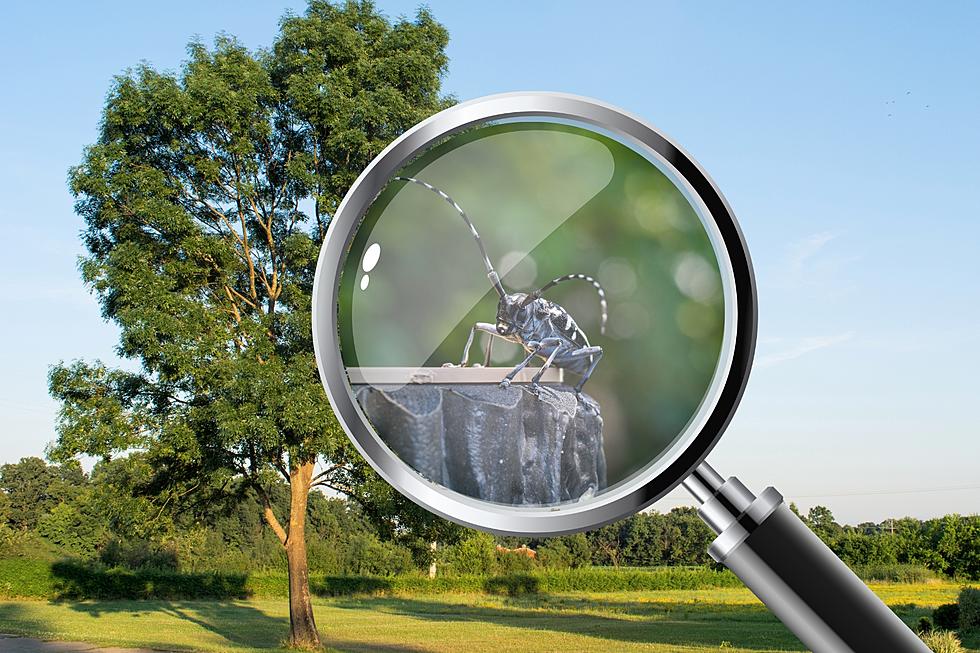
Indiana DNR Wants You To Check Your Trees for Destructive Beetle
This little beetle can cause a whole lot of problems, and now is the best time to spot them in your trees.

Check Your Tree Month
According to the Indiana Department of Natural Resources, August has been dubbed "Check Your Tree Month." The reason for August being the month to check your trees, is because this is the time of year when these invasive beetles are active, and most easily spotted.
Asian Longhorned Beetle
The Asian Longhorned Beetle (or ALB) is an invasive beetle that can cause some serious havoc to native trees. According to the USDA, the Asian Longhorned Beetle feeds on a variety of trees in the United States and eventually, they kill the trees they're feeding on. These beetles are actually native to China and the Korean Peninsula, and are a part of the wood-boring beetle family. Another reason these beetles cause such wreckage is that signs of an ALB infestation typically don't show for 3-5 years, so you may have them long before you notice them. That's why it's important to check your trees in August.
Indiana DNR Asks You to Check Your Trees for ALB
The Indiana DNR took to Facebook to ask Hoosiers to help cut down on ALB infestations by checking your trees for signs of an ALB infestation. Indiana DNR says there are 12 types of trees the ALB feeds on including:
- All Maples
- Ash
- Birch
- Elm
- Buckeye
- Poplar
- Willow
- Sycamore
- And several other varieties (full list here)
Signs of an infestation include holes the size of a dime, oviposition sites, frass at the base of the tree, large branch loss, and more. The Indiana DNR recommends reporting to them by emailing DEPP@dnr.IN.gov as soon as you notice signs of an infestation.
Here is what the Indiana DNR had to say about checking your trees on Facebook:
CHECK YOUR TREE MONTH: August is Check Your Tree Month because Asian Longhorned Beetle (ALB) is particularly active this time of year and signs and symptoms may be easier to see.ALB feeds on 12 genera of trees including all maples (Acer spp.), ash (Fraxinus spp.), birch, (Betula spp.), elm (Ulmus spp.), buckeye (Aesculus spp.), poplar (Populus spp.), willow (Salix spp.), sycamore (Platanus spp.) and several others. Due to this large host range, the potential for devastation is great.When dealing with any insects, sometimes they can be hard to spot. Often, we’re looking at different signs and symptoms first that lead us to the eventual culprit.Signs of ALB infestations start to show after about 3-4 years. The amount of time it takes for the tree to die depends on the tree, its overall health, the size of the infestation and other stress factors. Once a tree is infested, it will begin to decline. It will not recover.Signs include perfectly round holes about the size of a dime, oviposition sites, frass at the base of the tree or on branches. Infested trees can look completely healthy for some time after initial infestation, but often they will loose large branches that will show the signs of significant larval feeding deep in the wood. There are several native insects that can be confused with ALB.If you see any suspicious insects or damage, contact DEPP@dnr.IN.gov. Remember to include your name, location, contact information and the pest you are contacting us about. Check out bit.ly/3rY1xgG for more information.
Quiz: Do you know your state insect?

![Pickles Watched All Her Puppies Be Adopted & Is Ready for Her Own Family [Warrick Humane Society Pet of the Week]](http://townsquare.media/site/74/files/2024/04/attachment-pickles-newburgh-warrick-humane-society.jpg?w=980&q=75)